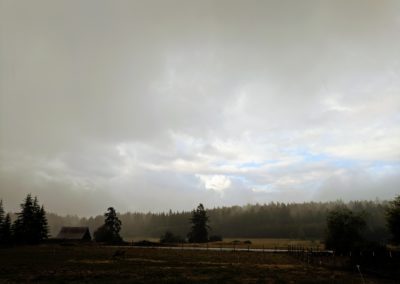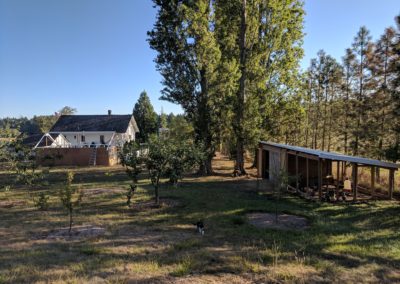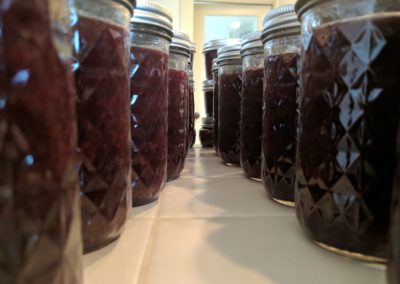Fall is most certainly in the air. There is a chill in our house this morning which has not been present in over a month. Fog hovers above the pasture and slowly dissipates as the sun rises. There are accents of green sparsely scattered across the fields after last week’s rain.
Autumn highlights a changing rhythm. Visitors become less of a fixture in downtown, school buses resume their morning and afternoon routes, and islanders begin to mingle about the cafés and parks again.
The work of harvest must commence in earnest. With harvest comes food preservation and storage. Each year our production increases; nuts multiply in quantity, fruit grows heavier on the limbs, and vegetables build in their abundance.
Fall encourages one last push before winter break. On the list of activities are the garden and the White Greenhouse project. Yesterday I erected the first of eight sets of rafters. Tomorrow I will place the ridge beam. The project is nearing completion.
On Monday I culled the roosters and one hen. Days prior I had been losing all of my eggs to an offending chicken who went about the coop as each hen laid her egg eating the prize she just deposited. One by one, I isolated three hens and a rooster. Immediately my egg count resumed.
Monday’s culling was two-fold: 1.) I had too many roosters as a result of incubation and 2.) I needed to eliminate the egg robbers from my flock. I hate to butcher such young birds in the peak of their production, but the problem was far too great not too.
Rather than butcher all three hens I dispatched the most likely candidate first and tied a cotton string around the ankles of the other two and set them loose in the coop once more. [Update]: The chicken egg consumption resumed almost immediately. I’ve removed the offenders, and eggs counts are back up. I will butcher these two hens the first chance I get.
The Value of Quackgrass | Elytrigia repens (L.) Nevski
Is your property covered with quackgrass? Has mowing lost its luster? Have you ever wondered if quackgrass has any nutritional value? In this article I compare some of the common feedstuffs in use for ruminants and other grazing livestock. Plus free grazing calculator.
Establishing a Garden When It’s Covered In Quackgrass
How and Why I Tag Trees
We plant a lot of trees around here, especially this time of year as temps warm yet the rain continues to fall. But the trouble with this is two fold. This post describes how and why I tag trees around the homestead.
A smiple and easy way to protect your strawberry crowns when planting bare root stock
A quick tip for using woodchips and protecting your strawberry crowns when mulching.









